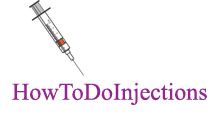- Joined
- Mar 16, 2007
- Messages
- 25,912
Sorry bellicose but your post is a both confused and confusing.
The above is wrong.
Firstly, IV sticks are for all practical purposes are sterile procedures but further, and more importantly, megakaryopoiesis is inhibited after acute viral or bacterial infection. Platelets have an important role to play in the immune system but their production is not stimulated by infection but rather by inflammation.[1]
Secondly -- and most compellingly -- study I referenced found that the increased risk of thrombosis from phlebotomy had a weak relationship to platelet count. Phlebotomy produces an increased risk of thrombosis via some other -- as yet unknown -- mechanism.
Coronary heart disease due to atherosclerosis is the commonest cause of heart disease in the West. It accounts for about 70% of cases of heart failure. You appear to be alluding to vulnerable plaques and their role in coronary occlusion. A special type of athersclerotic plaque is implicated in myocardial infarction (MI) -- termed vulnerable plaque -- and we don't all have this sorts of plaque. We all have arterial plaques but not all plaques are vulnerable. Vulnerable plaque is distinguished by (a) a lipid rich core (also containing macrophages and microcalcifications); (b) a thin collagen rich fibrous cap; and (c) inflammation within the plaque. These vulnerable plaques are vulnerable to rupture (hence the name) and when they rupture, thrombosis follows (due to platelet aggregation) on the ruptured plaque and this leads to the arterial obstruction which can lead lead to MI. MI and thrombosis are not mutually exclusive as you imply but rather quite often mutually inclusive. MI happens most often as a consequence of atherothrombosis. So maldorf is correct in saying he had a thrombus i.e. blood clot.
You are confusing a thrombus with an embolism. A thrombus is a clot which is attached at its point of formation. An embolism is blood clot that detaches from its point of formation and travels to another site via the circulatory system to cause an occlusion.
These can cause an embolism or a thrombus.
Yes he did have a blood clot. The most common mechanism by which myocardial infarction occurs is atherothrombosis i.e. thrombosis superimposed upon a ruptured plaque leading to luminal obstruction.
You are comparing apples with oranges. Young guns die most often from cardiomyopathy cause by left ventricular hypertrophy (see my posts on the topic).
Who perform it isn't really the issue. The concern that maldorf has correctly identified is that phlebotomy increases the risk of thrombosis.
hey, Im glad youre around here! You know your stuff. Helps me to not be the only one here trying to bring these rarely known facts to the attention of readers on here. If you dont mind, what is your background?
I am not trying to brag here, just giving some background so you dont think im not ignorant as it seems at least one person here thinks I am. Me, I studied premed back at college and graduated with a bachelors in biology/zoology. then went on to earn a masters in education and teach high school bio/chem/sci. Also taught some undergrad anatomy labs at college as a TA. Sounds like you have a great level of education. Curious if youve been to med school or similar. I took some classes at med school as a grad student in exercise physiology which I also studied.


















































































